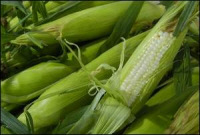



Do Biofuels Mean Inexpensive Food Is a Thing of the Past?
US - Concern is growing that expanded biofuels production means the end of inexpensive food. After all, the prices of corn, soybeans, and wheat have dramatically increased and are likely to stay high.
The line of thinking that expects expensive grains and oilseeds to lead to dramatically higher food costs follows the logic often used by proponents of U.S. farm programs. Many proponents justify subsidies by claiming that farm payments work to keep food plentiful and inexpensive by artificially keeping the price of commodities lower than production costs. For this justification to be valid, farm subsidies would have to expand commodity production, thereby lowering commodity market prices.
Lower prices would then, in turn, lead to an expansion in the production of the food that all of us actually eat (pork chops instead of no. 2 yellow corn), which would cause food prices to be lower than they would be otherwise. Thus, according to the argument, we do not need to spend as much of our income on food. By the same logic, high commodity prices caused by subsidized biofuels should result in a reduction in the production of food and higher food prices.
There is enough economics behind this logic to make it plausible, even though it is largely false. In the case of farm programs, it is easy to demonstrate that feed grain and oilseed prices are largely unaffected by U.S. farm subsidies, particularly since 1996 when Congress removed USDA's authority to increase commodity prices through acreage set-asides and subsidized storage. It is also easy to demonstrate that the small share of the final consumer food dollar that goes to the farmer means that even a doubling of feed grain and oilseed prices from expanded biofuels production will lead to relatively modest increases in the prices of meat and dairy products. Food prices are largely determined by costs and profits after commodities leave the farm.
How Much for Food?
In the United States, consumers spend a relatively small amount of their disposable incomes on food. However, diverting a large share of U.S. feed grain production to biofuels will affect the price of food. Knowing how U.S. consumers spend their food dollars and how higher commodity prices influence food prices will give us a better understanding of whether we'll be spending more or less on food in the future.
Figure 1
One indicator of a nation's standard of living is the proportion of income that its citizens spend on food. Typically, this share is measured using after-tax or disposable income. As shown in Figure 1, this share in the United States has fallen from 20 percent in the early 1950s to about 10 percent today. In contrast, Canadians today spend an average of about 14 percent of their disposable income on food, and Mexicans spend 26 percent.
Figure 2
The share of income that Americans spend on food would actually be smaller than 10 percent were it not for the large increase in expenditures away from home. As shown in Figure 2, beginning in the mid-1960s, Americans began to increase the amount of money spent on dining out. Today Americans spend about half of their food dollar on food away from home. Part of this increase in expenditure patterns has been driven by the changing structure of the U.S. family, including more women entering the labor force, and part has been driven by changes in demand for food driven by income growth. USDA reports that expenditures on food total about $3,600 per person per year in 2006 dollars.
The primary reason why food prices have risen more slowly than incomes and other prices is rapid productivity growth on the farm and all along the food chain. Farmers and food companies have dramatically increased the efficiency with which they can produce food. There is no reason to believe that we have seen an end to this productivity growth. But expanded biofuels production may counter some of the impacts of this growth on future food prices.








